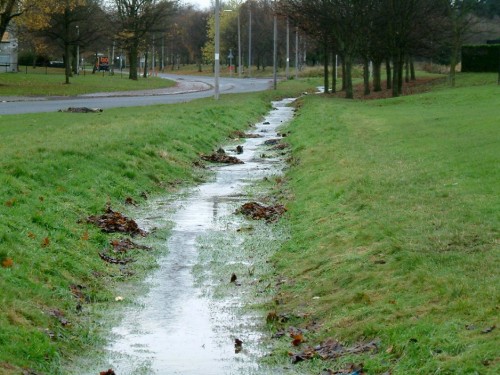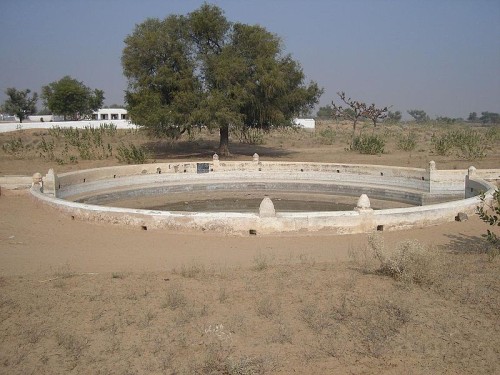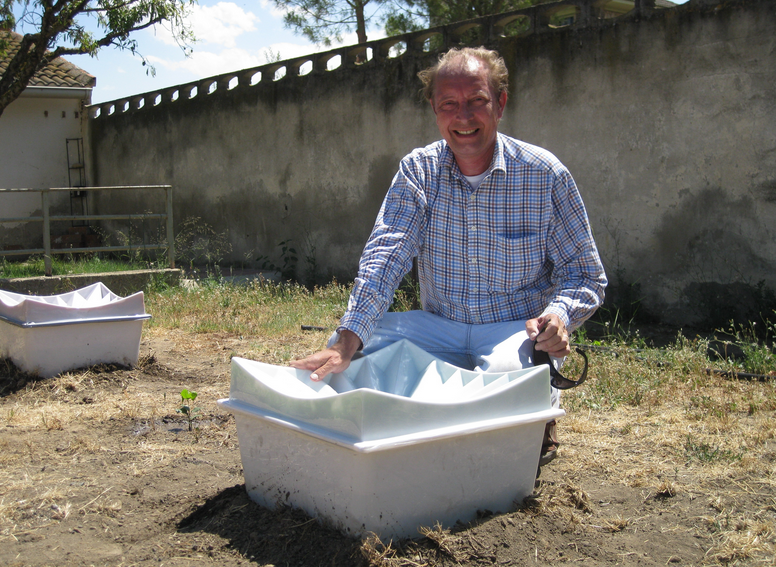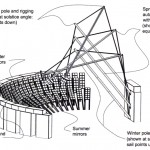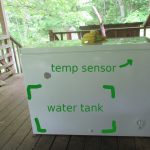“Simply put, swales are water-harvesting ditches, built on the contour of a landscape. Most ditches are designed to move water away from an area, so the bottom of the ditch is built on a modest slope, usually between 200:1 to 400:1. Swales, however, are flat on the bottom because they’re designed to do the opposite; they slow water down to a standstill, eliminate erosion, infiltrate the surrounding area with water, and recharge the groundwater table. When water moves along the flat bottom of a swale, it fills it up like a bathtub — that is, all parts of the bath tub fill at the same rate. The water in a swale is therefore passive; it doesn’t flow the way it would on a slope.” [Read more…]
Recharging Groundwater with Water-Harvesting Ditches
Water Johads: A Low-Tech Alternative to Mega-Dams in India
When the British colonized India, they imposed their own system of water management, which included the building of large-scale dams, sewers, and irrigation channels. This high-tech approach continues today, as the World Bank is urging India to build enormous dam projects to fight drought and depleted aquifers. The Indian government has followed its advice. Its first Prime Minister, Jawaharlal Nehru, called dams the “Temples of modern India”. Since then, India has built over 5,000 dams and large reservoirs. [1]
However, before the British arrived, people on the subcontinent used traditional low-cost, low-tech engineering to collect rainwater for thousands of years. This involved the placement of thousands of small structures throughout rural areas which, in one way or another, catch excess rainwater from the monsoon months and allow it to slowly percolate into the groundwater during the dry season. To maintain and manage these structures, community-based management schemes were necessary. However, these were actively discouraged during British rule and following independence. As a result, in the 20th century many of these small reservoirs fell into disrepair.
Self-Watering Planter From Porous Earthenware
Industrial designer Joey Roth developed a self-watering planter for use indoors or out. It is made from porous unglazed earthenware:
“Soil and plants are placed in the outer donut-shaped chamber, and the center chamber is filled with water. The unglazed terracotta’s natural porosity allows the water to move from the center chamber and into the soil, based on the soil’s moisture (and thus the plant’s need for water). The terracotta wall both regulates and filters the water. A simple lid on the top of the water chamber prevents evaporation.”
The design is based on the Olla, a terracotta pot for irrigation that has been in use for 4,000 years. See also:
Water Batteries for Trees
“Using groundwater to grow crops and trees doesn’t make sense to Pieter Hoff, a Dutch inventor. Not only are traditional irrigation techniques inefficient because most of the water is lost to evaporation, Mr. Hoff says, but water can be easily captured from the atmosphere to grow just about anything.
To prove his point, Mr. Hoff retired from the lily and tulip export business in 2003, established his company, AquaPro, and devoted himself to the development of the Groasis Waterboxx (manuals), which he says will grow food crops and trees even in the driest places on earth.” Read more.
